May 22, 2025 | 10:52 GMT +7
May 22, 2025 | 10:52 GMT +7
Hotline: 0913.378.918
May 22, 2025 | 10:52 GMT +7
Hotline: 0913.378.918
How do you evaluate the role of agricultural extension in recent years?
Looking back on the 30-year development process of agricultural extension in Hanoi in particular and agricultural extension in the country in general, I feel that the mission of eliminating hunger and reducing poverty for farmers has been accomplished. Agricultural extension was born, putting into production many new techniques, new plant varieties and animals. It helped improve the productivity and quality of agricultural products, meeting both domestic and export needs.
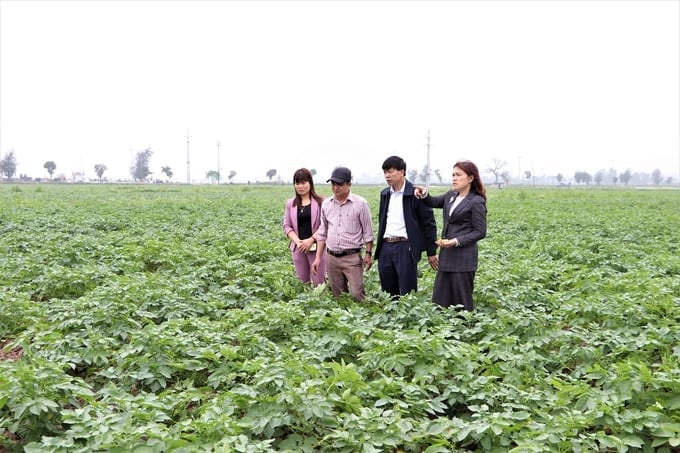
Ms. Vu Thi Huong - Director of Hanoi Agricultural Extension Center (far right) and her colleagues visited potato fields. Photo: Documents.
As early as the 2000s, we saw the problem of agricultural productivity reaching a breaking point. The difficulty arisen over the past time is that we keep having to rescue agricultural products, causing prices to fall during the good season. They were visible realities.
Now farmers need support and advice on how to sell their products. We began to guide farmers on how to cooperate to produce goods, ensuring uniformity in quality and quantity for consumption. We have also supported linked models in the production of safe rice, vegetables, free-range chickens...
On the one hand, agricultural extension organizes training classes for actors in the production chain so that they understand the role and meaning of linking together and forcing them to link. Businesses that consume products also want to find input, they want to know which areas have organizations, groups, and cooperatives that produce quality agricultural products, and farmers want to sell their products. Agricultural extension is a bridge between cooperatives, farmers and businesses through product consumption forums. However, those are just the initial steps.
To support farmers to consume agricultural products stably, there must be mechanisms and policies of local governments and specialized agencies in the construction and management of planting and farming areas and quality inspection and supervision. There have also been many broken connections due to the lack of a common voice. The cause may be from the consuming business or maybe from the production unit.
For agricultural production, especially vegetable growing, the area of each household is very small. To have a raw material area of 10 - 20 ha, many households must be involved. Understanding and enlightening the thoughts of hundreds of people is a problem. Meanwhile, when bringing products to supermarkets, people usually pay after 15 - 30 days. If cooperatives do not have capital, they will not have money to pay farmers. Not to mention, cooperatives that do not manage quality well will be refused consumption by supermarkets.

Before transplanting machines, sowing was a technical advancement that farmers eagerly welcomed. Photo: Duong Dinh Tuong.
How did the qualifications of agricultural extension officers 30 years ago compare to the intellectual level of the population and how does it compare to the intellectual level now, especially compared to farm owners and advanced cooperatives, ma'am?
Previously, it was true that people's farming skills were still very backwards. Farmers work purely according to custom, the experienced instructing the newcomers. Every crop they grow and plant their seeds, so the quality of seeds and farming techniques are not guaranteed, there are many pests and diseases, and productivity is low. Agricultural extension and the introduction of new technical advances have completely changed production. Wherever the agricultural extension officers went, they were warmly welcomed by people. When transferring technical advances, if you only communicate through speech, people won't listen. Through agricultural extension models, after just one crop, farmers saw the difference and quickly followed suit.
Farmers have switched from early spring rice crops to late spring, shortening the season so they can add a third crop - the winter crop. On the other hand, in addition to pure rice varieties with good yields, hybrid rice is a breakthrough. That's why I say agricultural extension has fulfilled its mission of helping people eradicate hunger and reduce poverty.
Along with the development of science and technology, not only agricultural extension officers but also farmers in Hanoi in particular and the whole country in general have updated very quickly. Because right in Hanoi and the provinces, there are agricultural businesses and they also have groups of scientific experts to advise and assist us like Bao Minh Agricultural Product Processing and Trading Joint Stock Company, Que Lam Group, for example. During that process, businesses go deeper and get closer to farmers, helping them. That is also competition with agricultural extension forces.
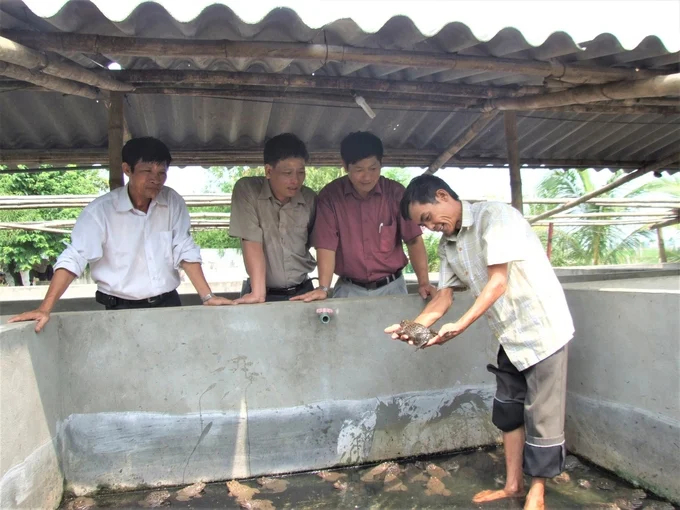
Frog farming model in the suburbs of Hanoi. Photo: Documents.
The mission of hunger eradication and poverty reduction has been completed, so is the mission of enriching farmers too difficult with the current agricultural extension, ma'am?
It's really difficult. For areas that are purely agricultural production and have a large area, it is more favourable than Hanoi. The capital now only has a few districts that focus on agricultural production, and the peri-urban districts and those preparing to become real agricultural production districts also have limitations. People heard that they were preparing to become an official district, so farming and animal husbandry began to slow down. As for the production of vegetables, flowers, and fruits, it is still needed even if it is in the district, priority can still be given to production.
Big businesses are not always easy to reach. As for small businesses, they are also having difficulty expanding their consumption markets. We want agricultural products, in addition to being provided locally in rural areas, to target the inner-city market - places with a large population and a large demand for safe agricultural products because they have high incomes.
Renting space to sell agricultural products in the inner city is also a problem. There are people from other provinces who come to Hanoi to start a business and want to establish a chain of agricultural product stores, so they need to borrow capital from the agricultural extension fund. But because they don't have a house here, they can't apply for a loan.
Thank you, ma'am!
Translated by Hoang Duy
![Reducing emissions from rice fields: [2] Farmers’ commitment to the soil](https://t.ex-cdn.com/nongnghiepmoitruong.vn/608w/files/news/2025/05/05/dsc08881jpg-nongnghiep-140632.jpg)
(VAN) Clean rice cultivation model in Thuong Tan commune, Bac Tan Uyen district, is assisting local residents in achieving sustainable agriculture by substantially reducing costs, increasing productivity, and protecting the environment.
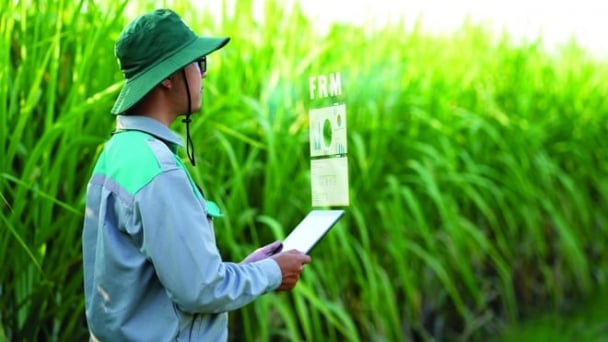
(VAN) At the conference to disseminate Resolution No. 68, AgriS introduced its digital agricultural ecosystem and reaffirmed its commitment to accompanying the Government in promoting private sector development and sustainable agriculture.
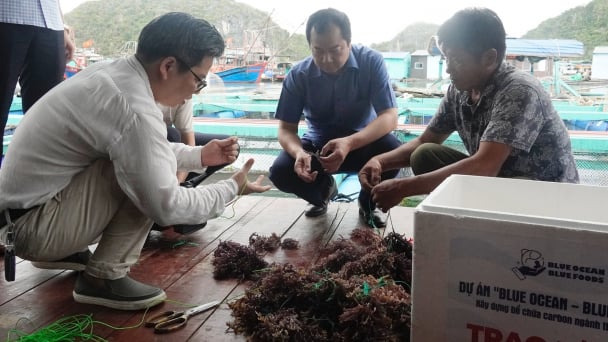
(VAN) 'Blue Ocean - Blue Foods' initiative is designed to restore marine ecosystems and establish sustainable livelihoods for local communities by cultivating a minimum of 1,000 hectares of cottonii seaweed in the first three years.
/2025/05/21/4642-3-112707_603.jpg)
(VAN) The V-SCOPE project has made direct contributions to three out of six pillars of the Comprehensive Strategic Partnership between Vietnam and Australia.
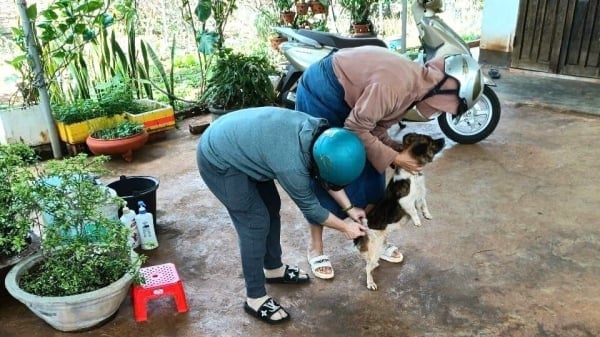
(VAN) Facing the threat of rabies spreading to the community, Gia Lai province urgently carries out measures to vaccinate dogs and cats on a large scale.
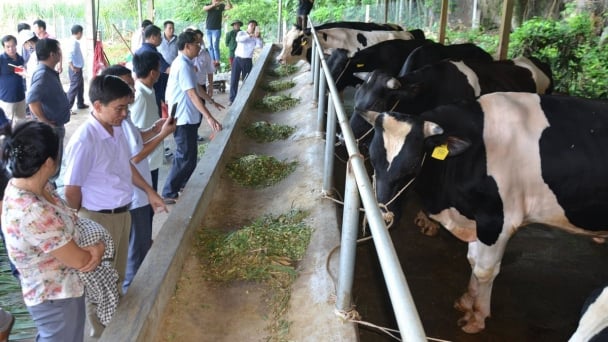
(VAN) Disease-free livestock farming not only protects livestock herds but also stabilizes production and livelihoods for many farmers in Tuyen Quang.
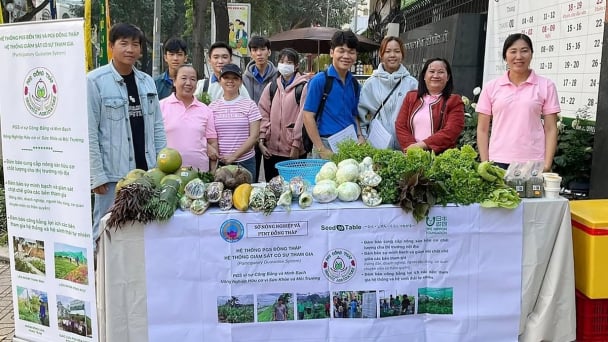
(VAN) Japan's grant aid project contributes to capacity building, promoting organic agricultural production, and fostering sustainable community development in Dong Thap province.